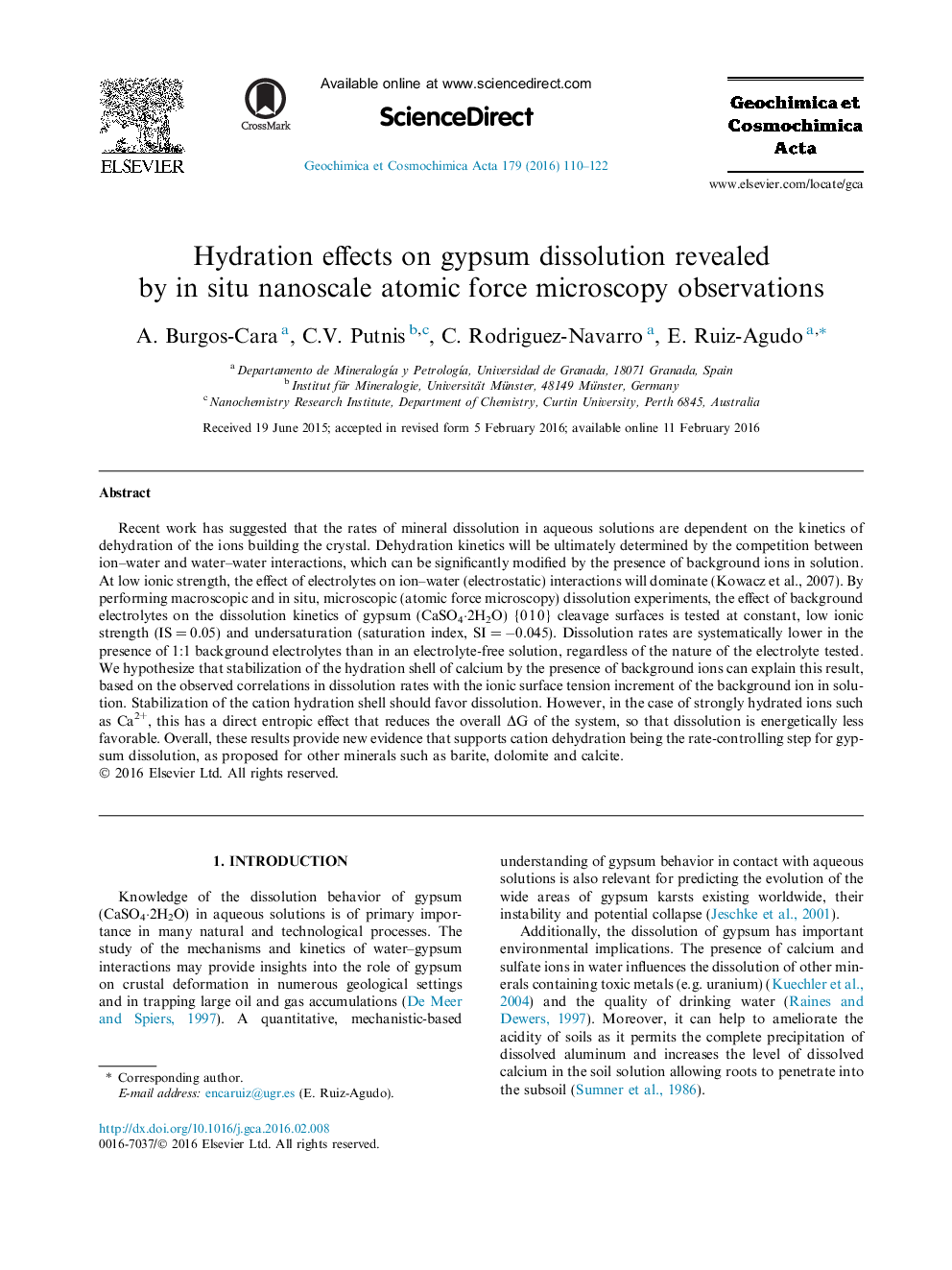| کد مقاله | کد نشریه | سال انتشار | مقاله انگلیسی | نسخه تمام متن |
|---|---|---|---|---|
| 6437586 | 1637978 | 2016 | 13 صفحه PDF | دانلود رایگان |
Recent work has suggested that the rates of mineral dissolution in aqueous solutions are dependent on the kinetics of dehydration of the ions building the crystal. Dehydration kinetics will be ultimately determined by the competition between ion-water and water-water interactions, which can be significantly modified by the presence of background ions in solution. At low ionic strength, the effect of electrolytes on ion-water (electrostatic) interactions will dominate (Kowacz et al., 2007). By performing macroscopic and in situ, microscopic (atomic force microscopy) dissolution experiments, the effect of background electrolytes on the dissolution kinetics of gypsum (CaSO4·2H2O) {0 1 0} cleavage surfaces is tested at constant, low ionic strength (IS = 0.05) and undersaturation (saturation index, SI = â0.045). Dissolution rates are systematically lower in the presence of 1:1 background electrolytes than in an electrolyte-free solution, regardless of the nature of the electrolyte tested. We hypothesize that stabilization of the hydration shell of calcium by the presence of background ions can explain this result, based on the observed correlations in dissolution rates with the ionic surface tension increment of the background ion in solution. Stabilization of the cation hydration shell should favor dissolution. However, in the case of strongly hydrated ions such as Ca2+, this has a direct entropic effect that reduces the overall ÎG of the system, so that dissolution is energetically less favorable. Overall, these results provide new evidence that supports cation dehydration being the rate-controlling step for gypsum dissolution, as proposed for other minerals such as barite, dolomite and calcite.
Journal: Geochimica et Cosmochimica Acta - Volume 179, 15 April 2016, Pages 110-122
